

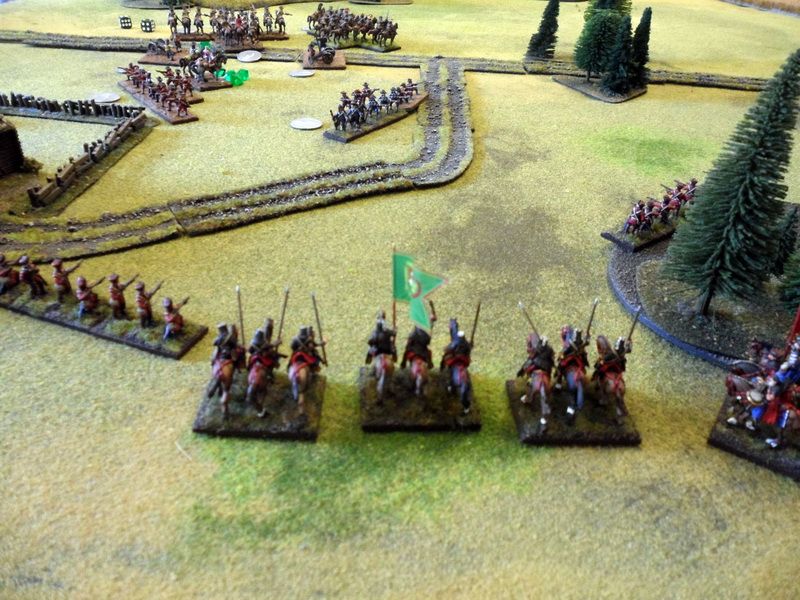 Despite difficult schedules Andreas and I managed to squeeze in a game of By Fire & Sword this Saturday.
Despite difficult schedules Andreas and I managed to squeeze in a game of By Fire & Sword this Saturday.For a change, the Polish skirmish force was weaker than the Swedish detachment:
Polish 1650-66 Skirmish list: 9FSP
Colonel: 4 command points
6 bases of Polish dragoons
3 bases of Pancerni with spears
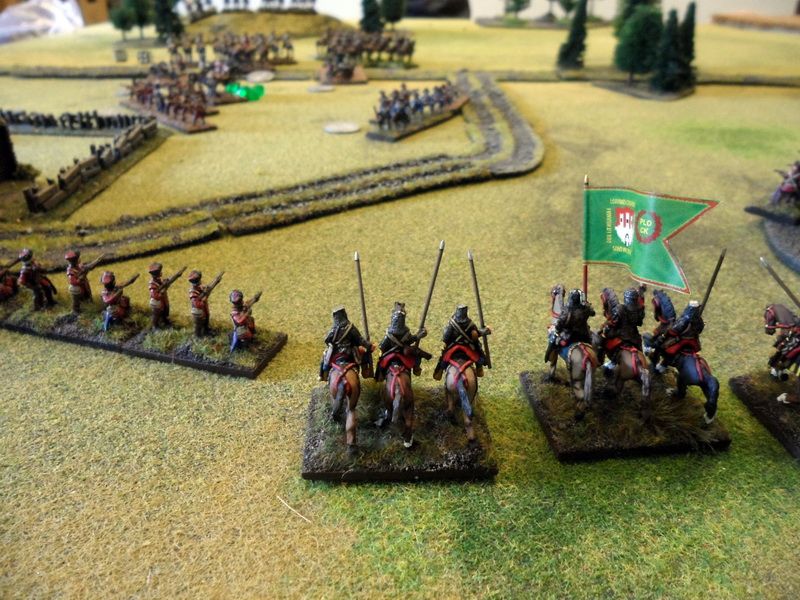 5 bases of cossack style cavalry
5 bases of cossack style cavalry4 bases of Volunteers
Swedish detachment: 12FSP
Colonel: 4 command points
Major: 1 command point
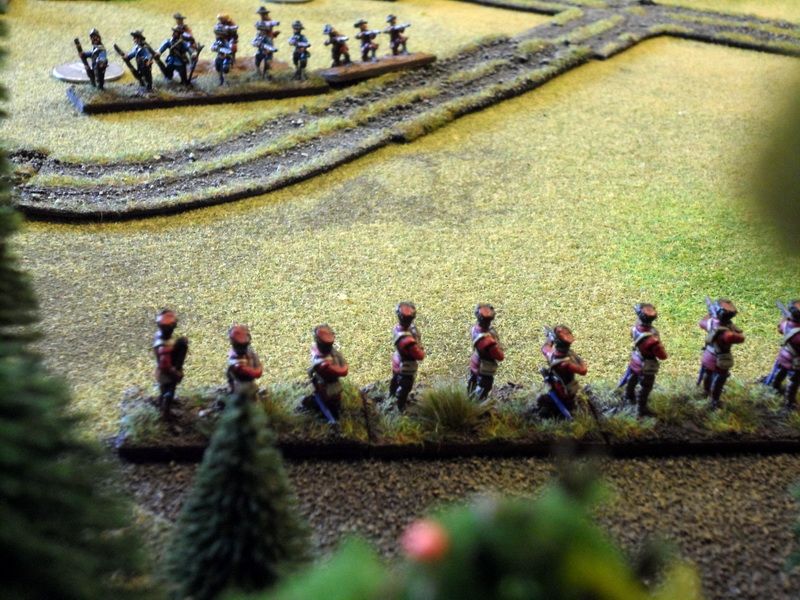 8 bases of musketeers
8 bases of musketeers2 regimental guns
4 bases of Mercenary Reiters
4 bases of Mercenary Reiter Veterans with arquebus
As the weaker player I got to roll on the scenario chart- and we got "Ambush" for the first time. This is an interesting scenario. The stronger player deploys his force in a tilted 40x40cm square, slightly off center. 20cm in front of the deployment zone the weaker player places a unit acting as "bait".
 The stronger player deploys his entire force, and the weaker player then deploys the rest of his troops anywhere on the table, as long as they are at least 20cm away from any enemy units. You could encircle or flank the units of the stronger player doing this.
The stronger player deploys his entire force, and the weaker player then deploys the rest of his troops anywhere on the table, as long as they are at least 20cm away from any enemy units. You could encircle or flank the units of the stronger player doing this.The special feature of this scenario is that there is no reconnaissance taking place, so players can't get any further tactical advantages on top of the ambush itself. The stronger player also cannot fire any weapons with match-lock, neither can the artillery be used during turn 1 (units are caught off guard).
 Finally one unit/squadron of the stronger player is randomly chosen to "Panic" at the start of turn 1.
Finally one unit/squadron of the stronger player is randomly chosen to "Panic" at the start of turn 1..........
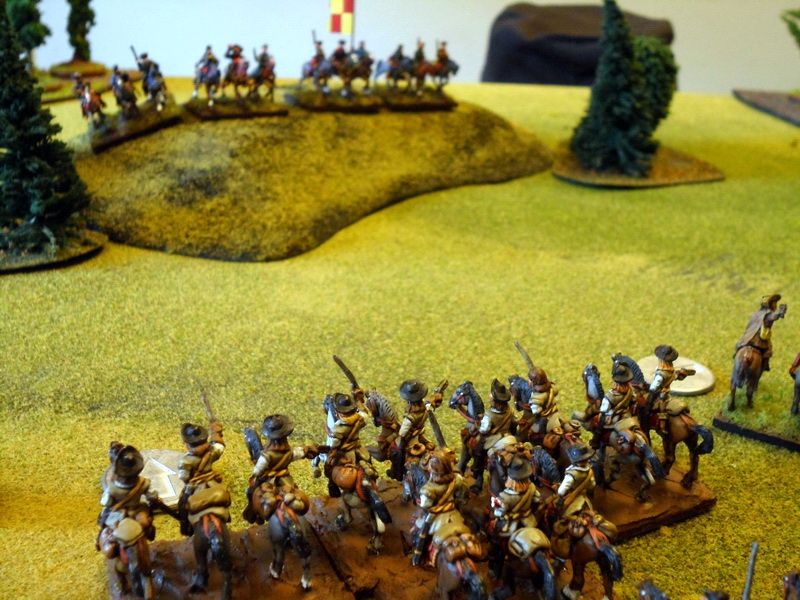 The battle
The battle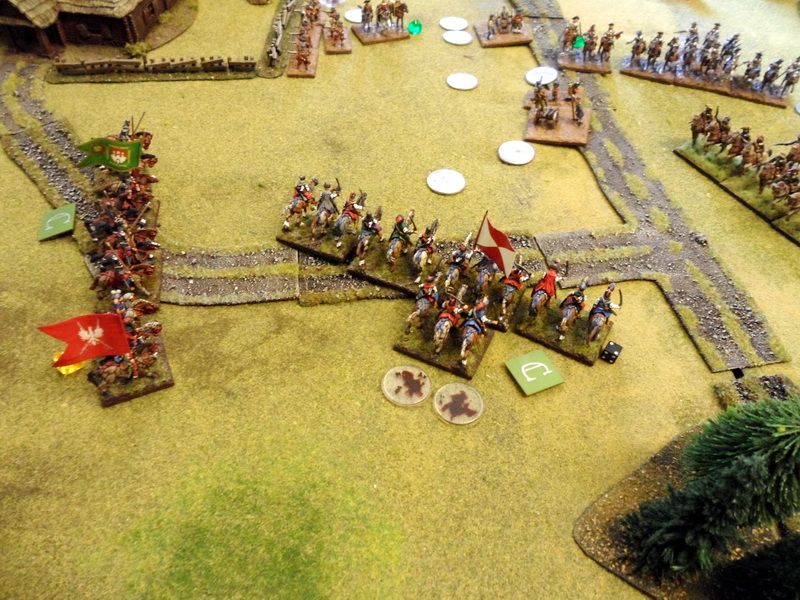 Volunteer cavalry acted as bait on the far side of the table, standing atop the hill. The rest of the Polish force created a half circle around the rear of the Swedish force which was really caught in a bad way with units facing all directions and one of the artillery pieces being disorganized, artillery and musketeer units also being useless on turn 1. That gave the Poles enough time and opportunity to severely weaken the Swedes without suffering too much from return fire.
Volunteer cavalry acted as bait on the far side of the table, standing atop the hill. The rest of the Polish force created a half circle around the rear of the Swedish force which was really caught in a bad way with units facing all directions and one of the artillery pieces being disorganized, artillery and musketeer units also being useless on turn 1. That gave the Poles enough time and opportunity to severely weaken the Swedes without suffering too much from return fire.With the Poles also winning initiative they decided to instantly withdraw the Volunteers behind the hill to prevent them from the
 Reiter charge. Dragoon units fired with little effect at the Swedish infantry while cossack style cavalry and Pancerni banners rode towards the enemy line.
Reiter charge. Dragoon units fired with little effect at the Swedish infantry while cossack style cavalry and Pancerni banners rode towards the enemy line.Sacrificing one squadron of musketeers the Swedes managed to slow down the Poles, the musketeers paid a high price as they were almost completely cut down but the Poles were now in a slight disarray in front of the Swedish gunline.
Furthermore, all Swedish units were now at a safe distance from the
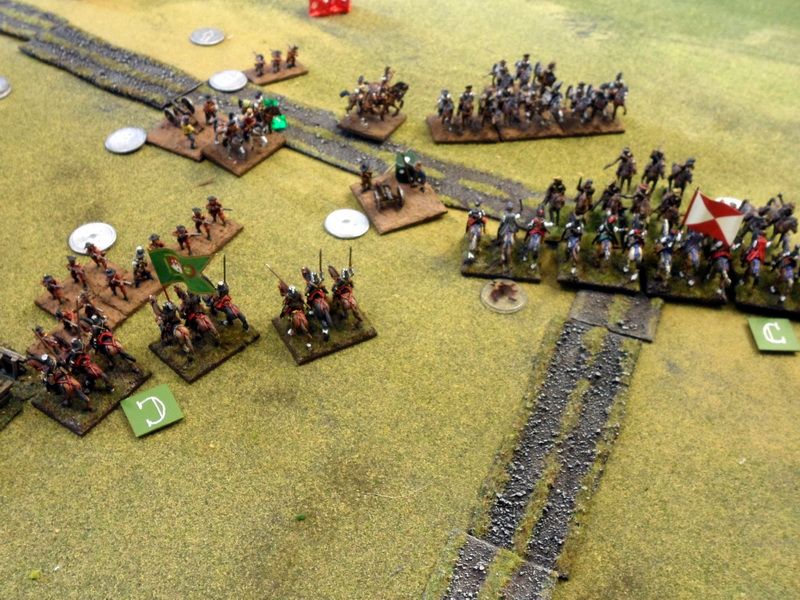 Polish dragoons which ended up being spectators for most of the battle (you could also argue they secured the rear of the Polish attack). Instead most of the fighting was done by the two main Polish cavalry units. Turn 2 however meant that the Swedes now had loaded their guns and artillery. Fortunately enough one of the regimental guns was still disorganized, so the Poles only needed to worry about a single cannon.
Polish dragoons which ended up being spectators for most of the battle (you could also argue they secured the rear of the Polish attack). Instead most of the fighting was done by the two main Polish cavalry units. Turn 2 however meant that the Swedes now had loaded their guns and artillery. Fortunately enough one of the regimental guns was still disorganized, so the Poles only needed to worry about a single cannon.Pancerni charged the second still intact unit of musketeers, while the cossack style cavalry charged the mercenary reiters. Case shot and volleys were fired at both units, which suffered minimal casualties and rode unflinching through the fire. The clash with the musketeers was an uneven battle that was quickly resolved. What remained of the unit after the charge was now fleeing. The mercenary reiters and cossack style cavalry clashed in a counter charge. Neither unit really got to use their impetus bonus, instead pure skill and pistols fired at close range and swords decided the battle.
 The fighting was fierce, the Swedes lost the fight, but kept their lines in good order as they were withdrawing, the second round of combat
The fighting was fierce, the Swedes lost the fight, but kept their lines in good order as they were withdrawing, the second round of combat  ended a draw which just meant that both units broke away from the fight to regroup and catch their breath.
ended a draw which just meant that both units broke away from the fight to regroup and catch their breath.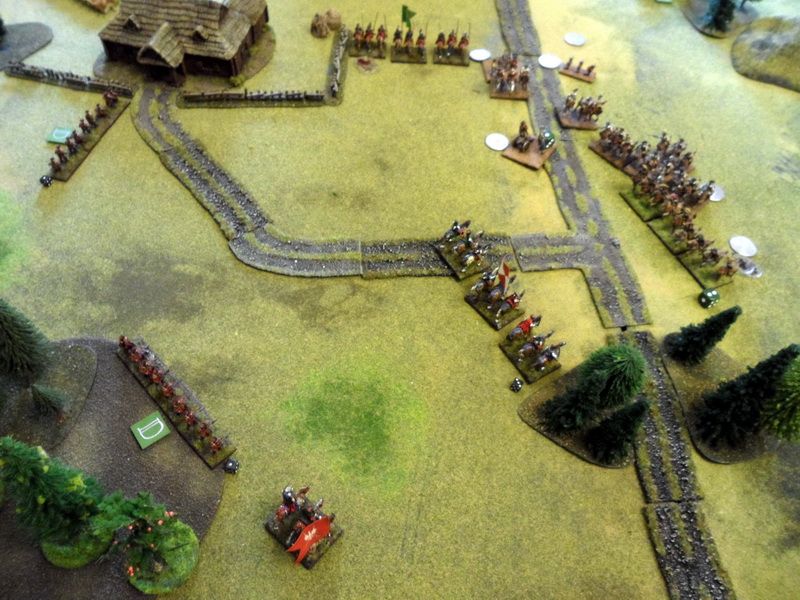 The Volunteers were now swinging around the back of the hill and moving along the rear of the Swedish force while the Polish commander had a very hard time issuing orders to his Pancerni banner as it was far outside of his command range. Orders to that unit barely made it through and they began moving back towards the rest of the Polish force. Meanwhile cossack style cavalry and mercenary reiters clashed once again - in another very even battle. The Polish light cavalry fought back and inflicted losses on the Swedish unit but were eventually forced to withdraw - doing so in good order once again.
The Volunteers were now swinging around the back of the hill and moving along the rear of the Swedish force while the Polish commander had a very hard time issuing orders to his Pancerni banner as it was far outside of his command range. Orders to that unit barely made it through and they began moving back towards the rest of the Polish force. Meanwhile cossack style cavalry and mercenary reiters clashed once again - in another very even battle. The Polish light cavalry fought back and inflicted losses on the Swedish unit but were eventually forced to withdraw - doing so in good order once again. Looking at the battlefield from a birds perspective it was a complete mess, Polish and Swedish units were crossing paths and around each other. The two Swedish commanders had to ride around close enough to their men but also make sure not to get caught in the fighting or get hit by a stray bullet.
 Again the Pancerni rode straight through artillery fire and wiped out one of the regimental guns, the second Swedish gun too was soon lost in the mayhem. Having made their way around the fighting and eagerly positioned themselves to catch the fleeing Swedish infantry the Volunteers were unfortunately caught by veteran reiters charging from the flank - cutting down a few riders and completely dispersing the rest who fled off table immediately after the first round of close combat!
Again the Pancerni rode straight through artillery fire and wiped out one of the regimental guns, the second Swedish gun too was soon lost in the mayhem. Having made their way around the fighting and eagerly positioned themselves to catch the fleeing Swedish infantry the Volunteers were unfortunately caught by veteran reiters charging from the flank - cutting down a few riders and completely dispersing the rest who fled off table immediately after the first round of close combat! Cossack style cavalry remnants and Pancerni were now charged, and countercharged in the middle with the remnant of the mercenary reiters supported by veteran mercenary reiters. The fighting saw near destruction of both Polish units who wanted to move back towards the safe covering fire from the Polish dragoons - but would never be able to do so. The fighting ended with the two Polish cavalry units being beaten back and fleeing away from the still unspent veteran reiters. The only comfort had been the destruction of the mercenary reiter regiment which lost its last men in the fighting.
Cossack style cavalry remnants and Pancerni were now charged, and countercharged in the middle with the remnant of the mercenary reiters supported by veteran mercenary reiters. The fighting saw near destruction of both Polish units who wanted to move back towards the safe covering fire from the Polish dragoons - but would never be able to do so. The fighting ended with the two Polish cavalry units being beaten back and fleeing away from the still unspent veteran reiters. The only comfort had been the destruction of the mercenary reiter regiment which lost its last men in the fighting.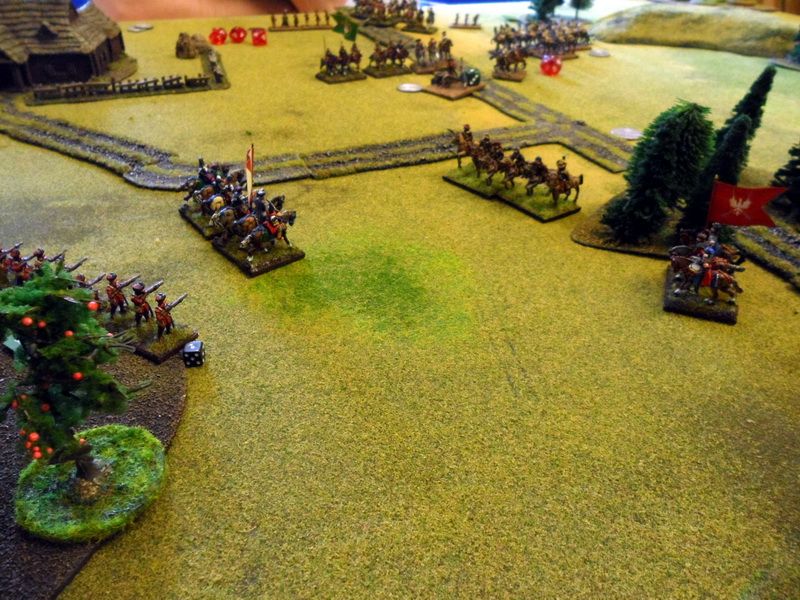 Thus ended a bloody and fierce battle. The Poles scored 2 scenario victory points for killing more than 50% of the enemy force, and another 2 points from the Swedes since the Swedish side suffered "very heavy losses". The Poles themselves suffered "heavy losses" and got 0 additional victory points.
Thus ended a bloody and fierce battle. The Poles scored 2 scenario victory points for killing more than 50% of the enemy force, and another 2 points from the Swedes since the Swedish side suffered "very heavy losses". The Poles themselves suffered "heavy losses" and got 0 additional victory points.In retrospect I should have been a lot more aggressive at the beginning, and a lot more careful towards the end. I had scored some good kills during the first half of the game, I should have just moved the cossack style and pancerni cavalry back. It was also a sloppy move to lose the entire Volunteer unit the way they were shattered.
The scenario did however allow the Polish units to raise hell, Andreas thought about his force after the battle and said he would most likely do better if he decreased the infantry and increased the cavalry. I agree with that assessment. Reiters are a really tough unit to crack, though we did not know what scenario was going to be played. In this particular scenario it was bad for the stronger player to field units that relied on firepower, in other scenarios they would most likely have done better and proved a lot more dangerous.
Still it was a great game, and nice to have tried out all the scenarios the core rules have to offer. This coming weekend I intend to run demo games at the club so there will be no regular AAR's but at the very least there will be some pictures.
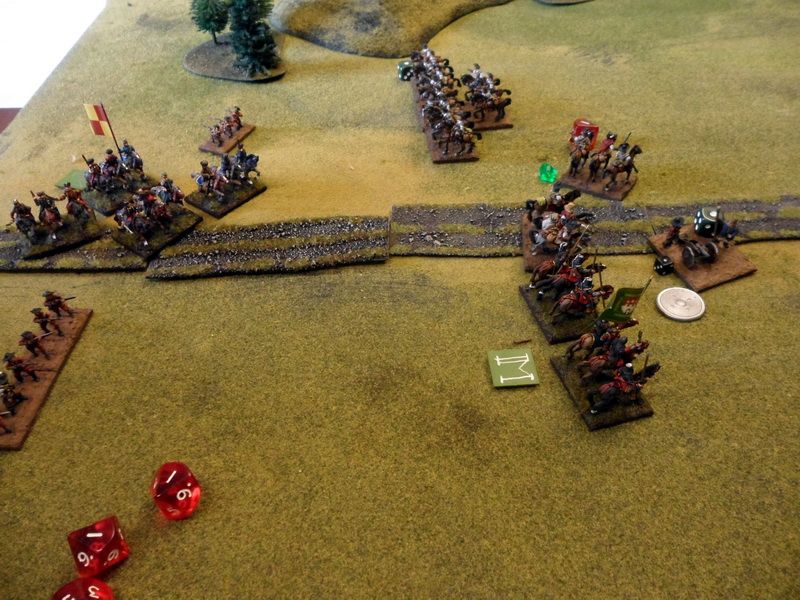
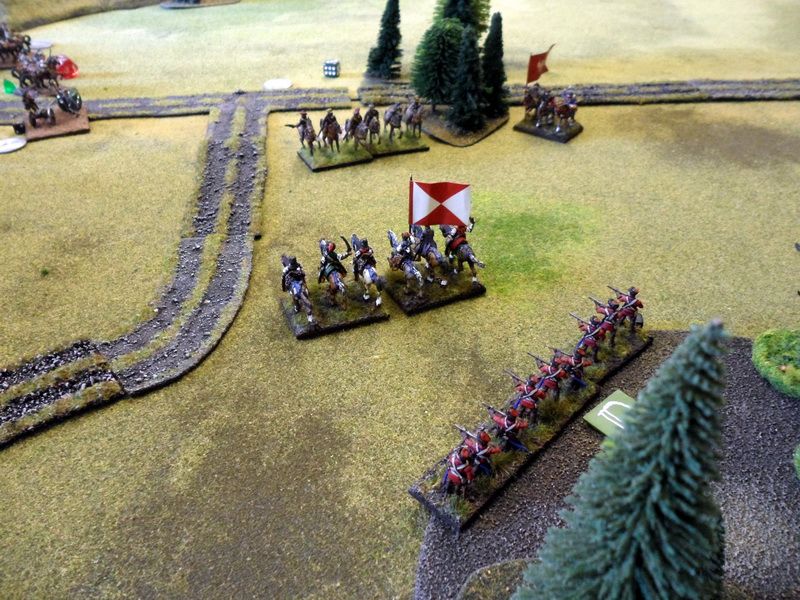
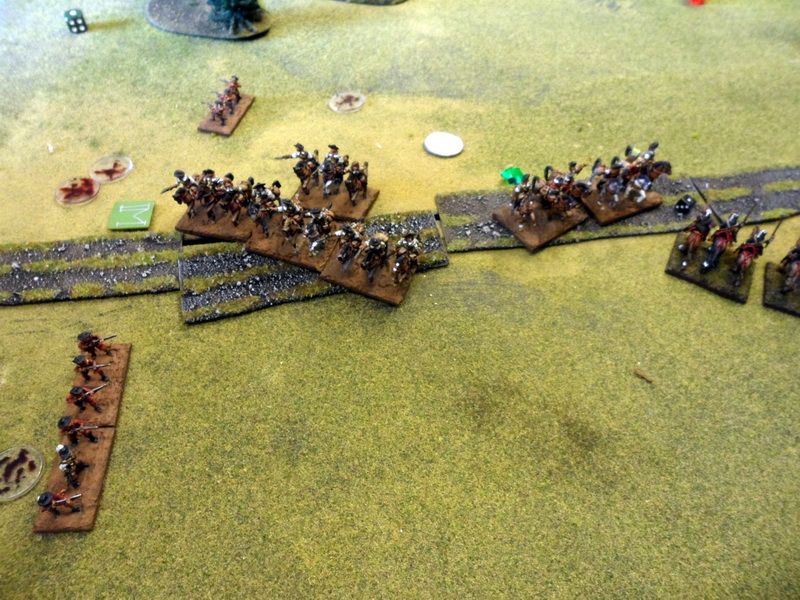

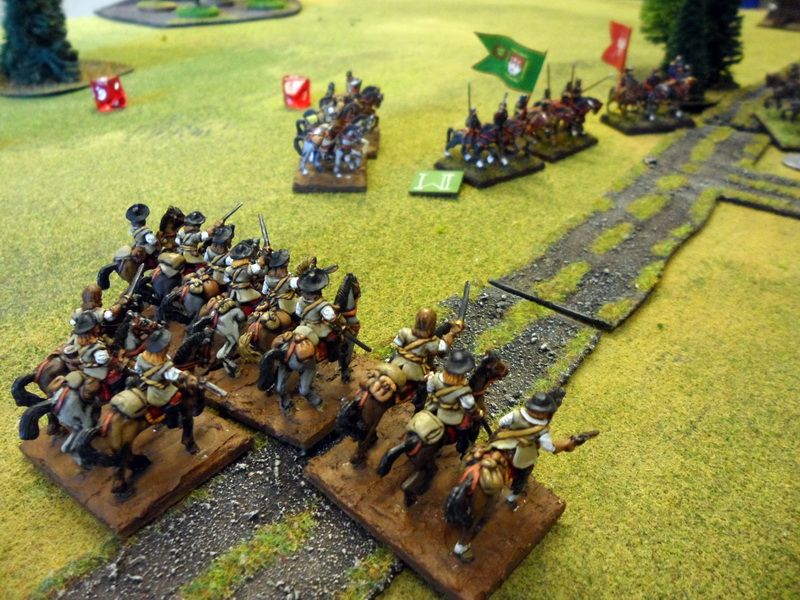

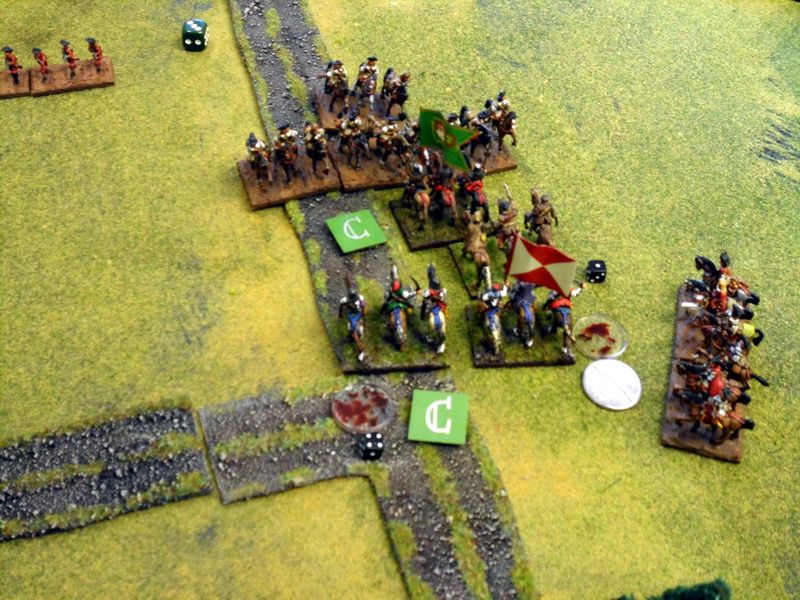
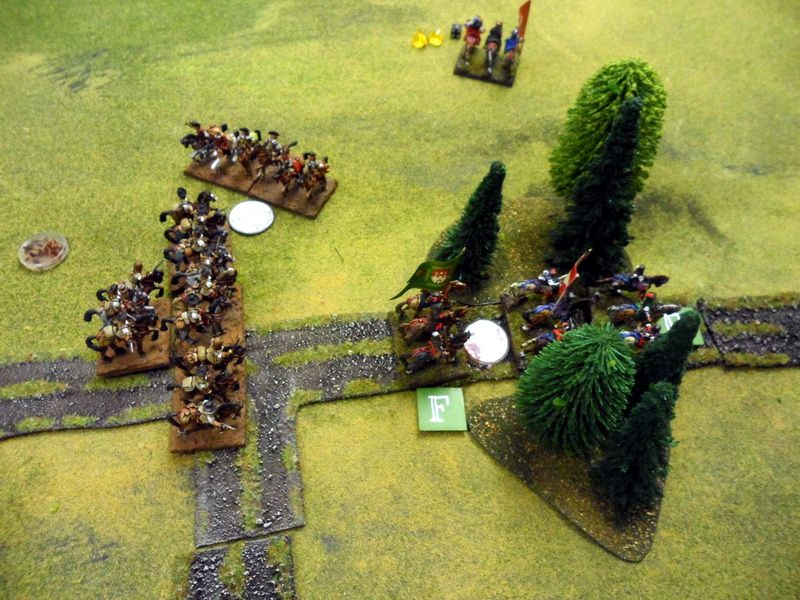
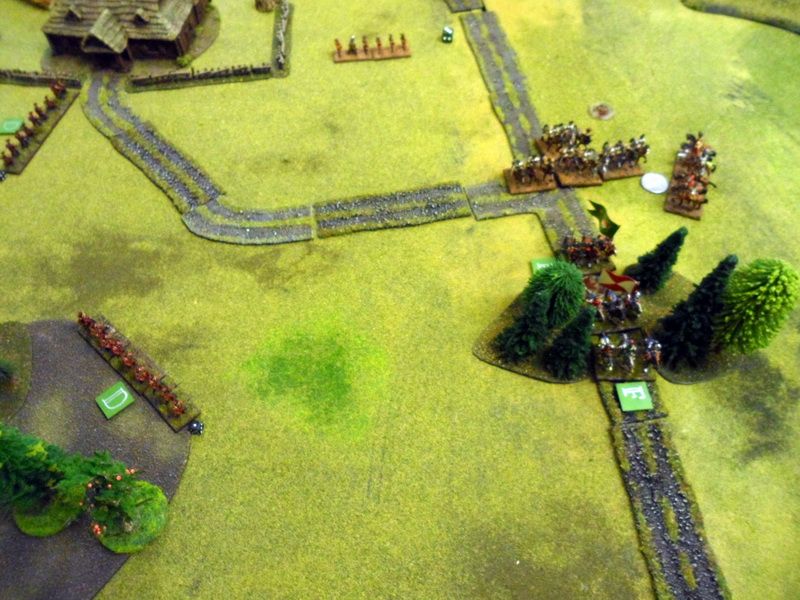
No comments:
Post a Comment